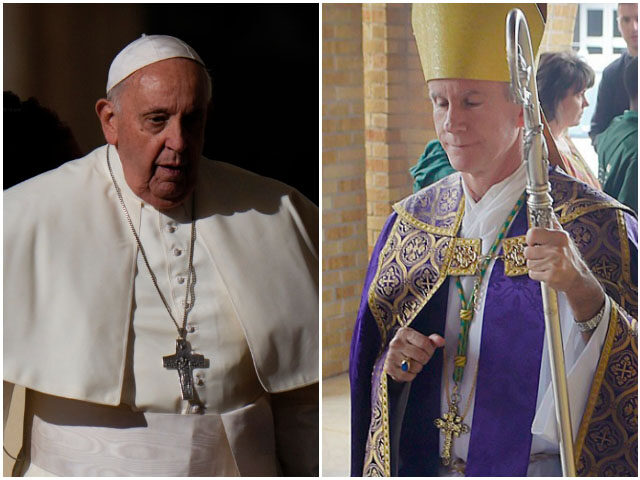ACLJ Preparing to File Critical Brief Defending the National Motto from Satanist’s Attack
December 14, 2017Saint of the Day for December 15: Blessed Mary Frances Schervier (Jan. 3, 1819 – Dec. 14, 1876)
December 15, 2017
By Anna O’Neil, Aleteia, Dec 12, 2017

Recite this poem to your children and help them recite it too! Everyone might learn from it.
A Christmas Carol
The Christ-child lay on Mary’s lap,
His hair was like a light.
(O weary, weary were the world,
But here is all aright.)
The Christ-child lay on Mary’s breast,
His hair was like a star.
(O stern and cunning are the kings,
But here the true hearts are.)
The Christ-child lay on Mary’s heart,
His hair was like a fire.
(O weary, weary is the world,
But here the world’s desire.)
The Christ-child stood on Mary’s knee,
His hair was like a crown,
And all the flowers looked up at Him,
And all the stars looked down.
G.K. Chesterton
Chesterton’s little “Christmas Carol” is simple enough for a 2-year-old to understand. Actually, a very young child might understand it better than the rest of us, knowing so well how comforting it is to be cuddled close by his mother. The poem makes use of very few details, and no literary conceits, to draw us into the room with the Holy Family.
The genius of the poem though, is in the way Chesterton draws in our focus. He gives us no information at all about the Christ-child, except for his stillness, and the light in his hair. Mary is with him; that’s all we know. But notice — first, we’re focusing on Christ, lying on Mary’s lap in the silence. Then, “O weary, weary were the world …” The scope of the scene zooms out, showing us not just the sin and suffering of the world then, but the whole weight of world’s sadness, which has accumulated on us over the ages. Abruptly, he brings us back into the room: “But here is all aright.” We feel a flood of relief as we focus our vision back on the mother and child.
This experience, of having your initial peace shaken by a the sudden intrusion of the evil of the world, is familiar to all of us. Have you ever been drifting off to sleep, when your mind brings up, unbidden, some crushing fear or awful memory? With each stanza, Chesterton reminds us of the solution. Persistently, he leads our minds back to the image of peace. “But here, the true hearts are.” “But here, the world’s desire.” But here, but here–whatever else is going on, whatever horrors the world has undergone, they cannot touch this scene.
It’s hard, nearly impossible, for adults to compartmentalize our world this way. We’re multitaskers. It’s second nature for us to be, say, cooking supper while thinking about the next day’s projects, while remembering what went wrong last week, and wondering what changes next year will bring. Children don’t do this. Even if they wanted to, they couldn’t. They have a naturally focused vision, and they participate completely in their own little sliver of the world, wherever they are. Chesterton’s trying to bring us back into this perspective, which we once had.
After three stanzas of gently re-focusing our attention whenever it strays, the fourth verse brings all of creation to the scene. The earth, and all the flowers, look up at the Christ, and the stars and all the heavens look down. Christ becomes, not just the center of our own vision, but the center of everything. The peace that previously existed only in that room has spread, extending itself to the whole universe.








